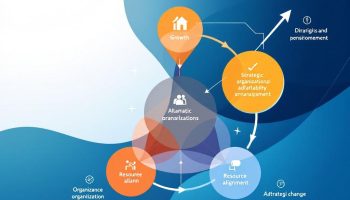
Companies that implement effective customer differentiation examples like product innovation, premium service delivery, dynamic pricing models, brand identity development, multi-channel experiences, data-driven personalization, and community building gain significant competitive advantages. These strategies create distinct value propositions that address customer needs in ways competitors can’t easily copy.
Why Customer Differentiation Matters to Business Success
Customer differentiation strategies establish meaningful connections with your target audience, driving sustainable competitive advantage. When you apply these seven approaches effectively, your company can command higher prices, boost customer loyalty, and reduce price sensitivity among your clients.
In today’s marketplace where products and services often look similar, businesses without differentiation strategies typically compete only on price—a situation that damages profit margins and diminishes brand value. Research shows that customers who receive differentiated experiences are willing to pay 16% more for comparable products and services.
Differentiation also makes your marketing more efficient. You’ll be able to craft targeted messages for specific customer segments, improving conversion rates and getting better returns on your marketing investments. As markets change quickly, these customer differentiation examples provide a foundation for creating lasting business relationships that stand up to competitive pressures.
The right customer differentiation strategy helps you avoid the commodity trap. Your business won’t just survive—it’ll thrive by creating unique value that customers recognize and appreciate.
Companies that successfully implement customer differentiation see a 30% increase in customer retention and loyalty.
7 Innovative Customer Differentiation Examples: Elevate Your Brand Today
In today’s competitive landscape, effective customer differentiation is essential for capturing attention and fostering loyalty. This section will explore seven innovative customer differentiation examples that can set your brand apart. Each example highlights a unique approach that businesses can adopt to resonate with their target audience and provide exceptional value.
From product innovation and premium service delivery to data-driven personalization and community building, these strategies serve as proven ways to enhance customer engagement and satisfaction. Whether you are an established organization or a new startup, implementing these tactics can help create memorable experiences that keep customers coming back. Dive in to discover how you can elevate your brand through effective differentiation techniques.
1. Product Innovation Excellence
Creating meaningful customer differentiation examples starts with innovative products that stand out in the marketplace. When developing your offerings, focus on features that directly address specific customer pain points rather than adding novelty without purpose.
Your proprietary technology development can serve as a powerful differentiator when it delivers tangible benefits that competitors can’t easily replicate. Consider how Apple’s ecosystem integration creates a seamless experience across devices – a customer differentiation example that keeps users within their product family.
Key elements for product innovation differentiation include:
- Unique features that solve specific customer challenges
- Proprietary technology that creates barriers to imitation
- Custom product configurations tailored to different user segments
- Integration capabilities that enhance the overall experience
By implementing strategic planning for innovation, you can ensure your product development efforts align with genuine market needs. The most successful differentiation occurs when your innovation addresses problems customers didn’t even realize they had.
2. Premium Service Delivery: Elevating Customer Differentiation
Implementing premium service delivery offers one of the most effective customer differentiation examples in today’s competitive marketplace. By creating exceptional service experiences, you establish meaningful separation from competitors that customers genuinely value.
Your service delivery strategy should include these essential elements:
- 24/7 dedicated support teams ready to assist at any moment
- Personalized concierge services tailored to individual preferences
- Proactive problem resolution before issues escalate
The Ritz-Carlton hotel chain exemplifies this approach with their legendary service standards. Their staff are empowered to spend up to $2,000 per guest to resolve issues without managerial approval, demonstrating true commitment to customer satisfaction.
When developing your premium service model, focus on creating memorable moments that customers will share with others. This stakeholder satisfaction strategy transforms ordinary transactions into relationship-building opportunities. Remember that consistent service excellence requires proper training, clear standards, and a culture that rewards going beyond expectations.
Expert Insight: To elevate customer differentiation through premium service delivery, implement 24/7 support, personalized concierge services, and proactive problem resolution. Foster a culture of excellence with empowered staff, as seen in the Ritz-Carlton, to transform ordinary transactions into memorable experiences that enhance customer loyalty and satisfaction.
3. Dynamic Pricing Models for Effective Customer Differentiation
Implementing dynamic pricing models is one of the most powerful customer differentiation examples that can transform your revenue strategy. By adapting prices based on market conditions, consumer behavior, and perceived value, you create natural segments within your customer base.
Value-based pricing tiers allow you to offer different service levels at corresponding price points, letting customers self-select into the appropriate category. This customer differentiation approach ensures everyone finds an option matching their needs and budget. For example:
- Basic tier: Core features at entry-level pricing
- Premium tier: Enhanced features with priority support
- Enterprise tier: Complete solution with dedicated account management
Customer loyalty rewards provide another differentiation mechanism by recognizing repeat business with escalating benefits. Airlines exemplify this through their fare class differentiation, where identical seats can vary dramatically in price based on booking flexibility, loyalty status, and timing of purchase.
Creating segment-specific packages tailored to different customer profiles enhances this approach. A strategic planning process helps you identify which customer attributes should drive your pricing differentiation, from industry size to usage patterns.
Expert Insight: Utilize dynamic pricing models to enhance customer differentiation by adjusting prices based on market trends and consumer insights. Implement value-based pricing tiers and rewards for loyalty to create tailored options, ensuring customers find solutions that fit their needs and budget effectively. Strategic planning will help identify key attributes for segmentation.
4. Brand Identity Development
Establishing a unique brand identity creates powerful customer differentiation examples that resonate with your target audience. When developing your brand identity, focus on creating distinctive storytelling that communicates what makes your company special. Patagonia exemplifies this strategy through their environmental activism, which has become central to their brand positioning and creates clear customer differentiation.
Key elements to develop in your brand identity include:
- Distinctive brand storytelling that captures your unique market perspective
- Values-based positioning that connects with customer beliefs
- Cultural alignment that resonates with specific audience segments
- Consistent visual and messaging elements across touchpoints
By infusing your values throughout your brand experience, you create meaningful competitive differentiation strategies that competitors cannot easily replicate. Patagonia’s commitment to environmental causes isn’t merely marketing—it influences their product development, supply chain decisions, and corporate initiatives. This authenticity makes their customer differentiation more sustainable and creates deeper loyalty than surface-level brand distinctions.
When implementing brand identity development, ensure your messaging remains consistent across all customer interactions to reinforce your unique market position.
Expert Insight: Develop a unique brand identity through distinctive storytelling and values-based positioning that resonates with your target audience. Ensure consistency in messaging and visuals across all touchpoints to reinforce your brand’s uniqueness. Authenticity, like Patagonia’s commitment to environmental causes, fosters deeper customer loyalty and sustainable differentiation.
5. Multi-Channel Experience for Superior Customer Differentiation
Implementing an omnichannel strategy is one of the most effective customer differentiation examples in today’s competitive marketplace. When you create a seamless experience across all touchpoints, you distinguish your brand from competitors who still operate in channel silos.
The most successful multi-channel approaches include:
- Seamless integration between physical and digital platforms
- Channel-specific perks that encourage cross-channel engagement
- Unified customer journey tracking for personalized interactions
- Consistent branding regardless of how customers interact with you
Disney exemplifies excellent customer differentiation through their park-to-digital experience. Their MagicBand technology connects your hotel room, park entrance, food purchases, and ride reservations into one seamless system. This stakeholder engagement approach creates memorable experiences that keep customers loyal.
For effective implementation, ensure your technology infrastructure supports data sharing across channels. When planning your multi-channel strategy, focus on removing friction points between channels rather than treating each as a separate entity. Your customers don’t see channels—they see your brand as a whole.
Expert Insight: Implement a seamless omnichannel strategy to enhance customer differentiation by integrating physical and digital experiences. Encourage engagement with channel-specific perks and ensure consistent branding. Focus on unified data sharing to eliminate friction, as customers perceive your brand holistically, not through individual channels.
6. Data-Driven Personalization
Implementing effective customer differentiation examples through data-driven personalization transforms how businesses engage with their audience. By analyzing customer behavior, preferences, and purchase history, you can create tailored experiences that significantly boost loyalty and conversion rates.
Data-driven personalization relies on several key components:
- AI-powered recommendations that predict what individual customers might want next
- Behavioral analytics that track how different customer segments interact with your products
- Custom communication strategies designed for specific customer profiles
Netflix exemplifies this approach with its sophisticated viewing suggestions algorithm. Their system analyzes over 100 million subscriber profiles to deliver personalized content recommendations, creating a unique experience for each viewer. This level of personalization has helped Netflix achieve remarkable customer retention strategies that other businesses can learn from.
When implementing data-driven personalization, you need to balance personalization with privacy concerns. Creating transparent data policies and allowing customers to control their information builds trust while still enabling effective competitive differentiation strategy through personalization.

7. Building Engaged Customer Communities
Building vibrant communities around your brand offers powerful customer differentiation examples that forge lasting connections. Your community-building efforts can transform one-time buyers into loyal brand advocates. Peloton exemplifies this strategy with its connected fitness community that makes exercising at home a social experience.
Consider these effective community-building approaches:
- Exclusive membership programs that provide special access and benefits
- User-generated content platforms where customers share experiences
- Interactive events and workshops that facilitate connections
- Virtual and in-person gatherings that strengthen relationships
When implementing these tactics, focus on active listening techniques to understand what truly resonates with your community members. The most successful communities make participants feel valued and heard. Creating spaces where customers can interact not only with your brand but with each other establishes emotional bonds that competitors find difficult to replicate.
Your community strategy should align with broader stakeholder engagement approaches, ensuring consistent experiences across all touchpoints. The return on investment from community building often appears in increased customer lifetime value and reduced acquisition costs.
Customer Differentiation Examples
Customer differentiation examples including product innovation, premium service delivery, dynamic pricing models, brand identity development, multi-channel experiences, data-driven personalization, and community building create unique value propositions in competitive markets. These seven strategic approaches help businesses establish meaningful connections with customers by addressing specific needs, delivering exceptional experiences, and creating barriers to competition that foster long-term loyalty.
Importance of Customer Differentiation
Customer differentiation examples are essential for business success as they enable companies to escape price-based competition and build sustainable competitive advantages. By implementing these seven strategies—from Apple’s ecosystem integration to Ritz-Carlton’s empowered service model to Netflix’s personalization algorithms—enterprises can:
- Increase customer retention
- Command premium pricing
- Create emotional connections that transform customers into loyal advocates
This ultimately drives higher profitability and market leadership.






